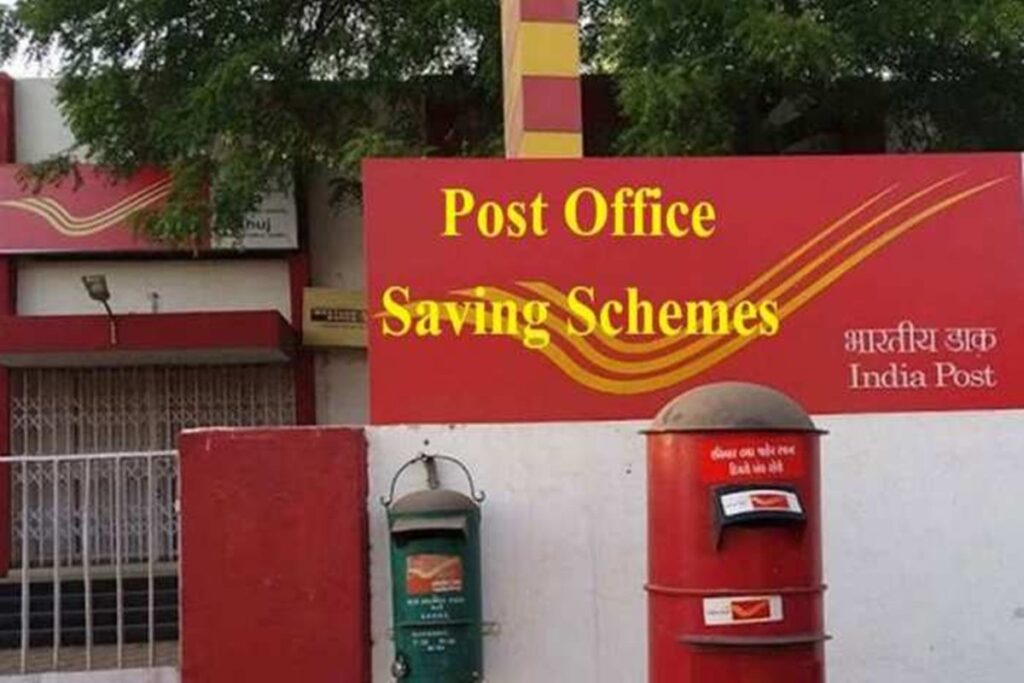Department of Posts Ministry of Communications Government of India comes out with a lot of different post office saving schemes so that the people can get an abundance of benefits even if they belong to not-so-rich families. Given below we have shared some of the most important specifications regarding the Post Office Saving Schemes 2023 available for the residents of India and we will share with all of our readers the types of the schemes including eligibility and benefits. We will also share the interest rates available in these schemes.
Post Office Saving Schemes 2023
There are a lot of post office saving schemes available for investors or people who want to get a proper return on their savings so that they can have a really luxurious life after they have retired from their 9 to 5 job. The Post Office Saving Schemes are available for the residents of India belonging to different types of economic classes available in the country. The people will be able to get an abundance of benefits and there are a lot of different types of saving schemes available for the residents to take part in.

Details Of Post Office Saving Schemes 2023
| Name | Post Office Saving Schemes |
| Launched by | Department of Posts Ministry of Communications Government of India |
| Objective | Getting proper investment benefits |
| Beneficiaries | Residents of India |
| Official site | Click Here |
LIC Varishtha Pension Bima Yojana
Types Of Post Office Saving Schemes
| Scheme | Details Of The Scheme |
| Post Office Savings Account | You can make a minimum deposit of Rupees 500 to open a savings account in the post office. The account can be opened in single or joint ownership by domestic customers. An interest rate of 4% p.a. Is applicable to the deposits. You can avail of a checkbook, ATM card, e-banking and mobile banking services, and other services with the account on request. |
| Post Office Time Deposit Account (TD) | There are four possible tenures for Post Office Time Deposit Accounts you can choose from, i.e. 1 year, 2 years, 3 years, and 5 years. The minimum deposit allowed in this account is Rs.1,000. The interest is calculated quarterly but is payable on an annual basis. For a tenure of up to 3 years, the rate is 5.5% p.a. and it is 6.7% p.a. for a 5-year tenure. |
| Post Office Monthly Income Scheme Account (MIS) | You can deposit a sum of Rs.1,000 up to Rs.4.5 lakh in a single account and up to Rs.9 lakh in a joint account. An interest rate of 6.6% p.a. can be earned through this account. You can get a monthly fixed income from the scheme. You cannot prematurely close the account before completing one year. Premature closure beyond one year can attract penalties. |
| Senior Citizen Savings Scheme (SCSS) | The deposit can range from Rs.1,000 up to Rs.15 lakh. The scheme offers an interest rate of 7.4% p.a. Individuals above the age of 60 years are eligible to open this account. Retired civilian employees aged between 55 years and 60 years and retired defense employees aged between 50 years and 60 years of age can also open the account subject to investing the retirement benefits within one month from the date of receipt of the benefits. |
| 15-year Public Provident Fund Account (PPF) | The scheme offers income tax deductions up to Rs.1.5 lakh per financial year. The minimum deposit required to open the account is Rs.500 and the upper limit is Rs.1.5 lakh. Though the tenure of the account is 15 years, you only have to pay Rs.500 per financial year to keep the account active. An interest rate of 7.1% p.a. is offered by the scheme. The interest is compounded yearly. Also, the interest earned on this account is tax-free. |
| National Savings Certificates (NSC) | NSC comes with a tenure of five years where you need to make a minimum deposit of Rs.1,000. There is no maximum deposit defined for this account. With an interest rate of 6.8% p.a., the interest gets compounded annually and is paid out only at maturity. An individual can open any number of accounts under the scheme. The certificate can be pledged or transferred as security to the housing finance company, banks, government companies, and others. |
| Kisan Vikas Patra (KVP) | The minimum deposit for this account is Rs.1,000. The applicable interest rate is 6.9% p.a. The tenure of the account is 124 months (10 years and 4 months). |
| Sukanya Samriddhi Accounts | Only girl children below the age of 10 years are eligible to get the benefits of this account. The account must be opened and operated by parents or guardians. The minimum deposit required is Rs.250 and a max of Rs.1.5 lakh per financial year. An interest rate of 7.6% p.a. Is applicable. The interest is calculated on a yearly basis and compounded annually. The guardian can operate the account until the girl child attains 18 years of age. The deposit can be made for a maximum of 15 years from the date of opening the account. |
Saral Pension Yojana
Benefits Of Post Office Saving Schemes
There are a lot of different benefits which will be available for the saving schemes available by post office in India:-
- The saving schemes are really easy to invest in and all of the residents can easily apply for the schemes.
- The saving schemes are really simple and are available at very flexible investment options.
- The candidates do not have to carry a large number of documents in order to get the savings schemes.
- The post office saving schemes are very long term oriented investment schemes that can extend up to 15 years.
- Many of the schemes are tax exempted.
- The interest rates in the schemes can range up to 4% to 9% that is a very risk-free option.

Application Fee For Various Schemes
The applicant must submit the application fees to get the following details in the post office:-
- Issue of duplicate passbook – Rs. 50.
- Issue of the statement of account or deposit receipt-Rs. 20 in each case.
- Issue of pass book in lieu of lost or mutilated certificate –Rs. 10 per registration.
- Cancellation or change of nomination –Rs. 50
- Transfer of account – Rs. 100
- Pledging of account – Rs. 100
- Issue of cheque book in Savings Bank Account – No fee for upto10 leaves in a calendar year and thereafter at Rs. 2 per cheque leaf.
- Charges on dishonour of cheque-Rs. 100
UP Pension Scheme
Post Office Saving Schemes Interest Rates
The following interest rates are available in the different types of schemes available:-
| Scheme | Interest Rate |
| Post Office Savings Account | 4% per annum (p.a.) |
| Post Office Time Deposit Account (TD) | First-year – 5.5% p.a. Second year – 5.5% p.a. Third Year – 5.5% p.a. Fourth Year – 6.7% p.a. |
| Post Office Monthly Income Scheme Account (MIS) | 6.6% per annum payable monthly |
| Senior Citizen Savings Scheme (SCSS) | 7.4% p.a. (Compounded annually) |
| 15-year Public Provident Fund Account (PPF) | 7.1% p.a. (Compounded annually) |
| National Savings Certificates (NSC) | 6.8% p.a. (Compounded annually) |
| Kisan Vikas Patra (KVP) | 6.9% p.a. (Compounded annually) |
| Sukanya Samriddhi Accounts | 7.6% p.a. (Compounded annually) |
Tax Benefits
The candidates will have to do the following tax implications for the various schemes:-
| Scheme | Tax Implications |
| Post Office Savings Account | Tax-free interest up to Rs 50,000 from the financial year 2018-19 |
| Post Office Time Deposit Account (TD) | Tax benefits up to 5 years under section 80C on deposits |
| Post Office Monthly Income Scheme Account (MIS) | Interest earned is taxable and no deduction under Sec 80C for deposits made. |
| Senior Citizen Savings Scheme (SCSS) | – Tax benefit under section 80C for deposits – TDS to be deducted on interest earned for more than Rs 50,000 p.a. |
| 15-year Public Provident Fund Account (PPF) | Tax rebate under section 80C for deposits (maximum Rs 1.5 lakh p.a.) |
| National Savings Certificates (NSC) | Tax rebate under section 80C for deposits (maximum Rs 1.5 lakh p.a.) |
| Kisan Vikas Patra (KVP) | Interest is taxable but no tax on the amount received on maturity |
| Sukanya Samriddhi Accounts | Investment (up to Rs 1.5 lakh exempt under Section 80C), interest, and the amount received on maturity is tax-free |
Delhi Widow Pension Scheme
Post Office Saving Schemes Investment Details
The candidates will have to do the following investments to get the benefit of the different types of post office saving schemes available in India:-
| Scheme | Minimum Investment | Maximum Investment |
| Post Office Savings Account | –Rs 20 –Non-cheque facility – Rs 50 | No limit |
| Post Office Time Deposit Account (TD) | Rs 200 | No limit |
| Post Office Monthly Income Scheme Account (MIS) | Rs 1,500 | For one account holders – Rs 4.5 lakh Joint account holders – Rs 9 lakh |
| Senior Citizen Savings Scheme (SCSS) | Rs 1,000 | Maximum deposit over the lifetime allowed at Rs 15 lakh |
| 15-year Public Provident Fund Account (PPF) | Rs 500 per financial year | Rs 1.5 lakh per financial year |
| National Savings Certificates (NSC) | Rs 100 | No limit |
| Kisan Vikas Patra (KVP) | Rs 1,000 | No limit |
| Sukanya Samriddhi Accounts | Rs 1,000 per financial year | Rs 1.5 lakh per financial year |
Eligibility Criteria
The applicant must follow the following eligibility criteria to apply for this scheme:-
| Scheme | Eligibility Criteria |
| Post Office Savings Account | Resident Indian, minor, and majors |
| Post Office Time Deposit Account (TD) | Individual |
| Post Office Monthly Income Scheme Account (MIS) | Individual |
| Senior Citizen Savings Scheme (SCSS) | Individuals of age> 60 years or age >55 years who have opted for VRS or superannuation |
| 15-year Public Provident Fund Account (PPF) | Individual |
| National Savings Certificates (NSC) | Individual |
| Kisan Vikas Patra (KVP) | Individual (Adult) |
| Sukanya Samriddhi Accounts | Girl Child – up to 10 years from birth and one additional year of grace |
Documents Required for Post Office Saving Schemes
The following documents must be submitted while applying for these schemes:-
- Account Opening Form
- KYC Form (For new customer/modification in KYC details))
- PAN Card
- Aadhaar card, if Aadhaar is not made available the following document may be submitted.
- Passport
- Driving license
- Voter’s ID card
- Job card issued by MNREGA signed by the State Government officer
- Letter issued by the National Population Register containing details of name and address.
- Proof of date of birth/birth certificate in case of a minor account.
Application Procedure Of Post Office Saving Schemes
You will have to follow the following application procedure to apply for the post office saving schemes:-
- You will first have to visit your nearest post office branch
- Now, you have to submit the account opening form with all of the other important documents mentioned in the article given above.
- You can also get these forms from the official website of post office saving schemes and you have to fill up the application form with all of the details successfully.
- Make sure that you submit the application form with proper application fees and you will be eligible for all of the benefits.